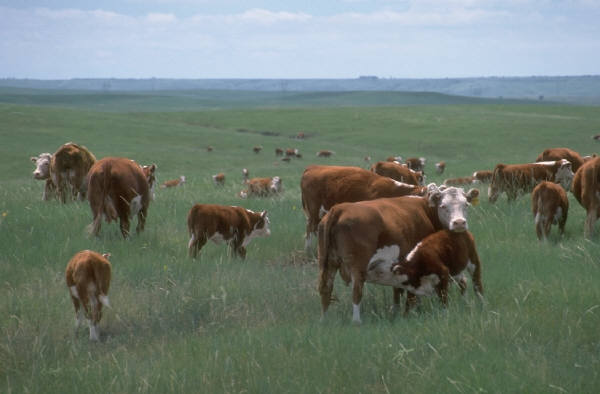 During the 2015 Cattle Industry Summer Conference in Denver this week, 16 beef industry leaders representing every link in the beef value chain presented a plan for meeting aggressive goals to strengthen the beef industry from 2016-2020. The Beef Industry Long Range Plan Task Force has been meeting since December, 2014. Oklahoma was represented on the Task Force by Auction Barn Owner Tim Starks of Cherokee, Oklahoma.
During the 2015 Cattle Industry Summer Conference in Denver this week, 16 beef industry leaders representing every link in the beef value chain presented a plan for meeting aggressive goals to strengthen the beef industry from 2016-2020. The Beef Industry Long Range Plan Task Force has been meeting since December, 2014. Oklahoma was represented on the Task Force by Auction Barn Owner Tim Starks of Cherokee, Oklahoma.
“While the beef industry has faced many challenges, the future holds tremendous promise for the industry,” according to Don Schiefelbein, owner/operator of Schiefelbein Farms and task force co-chair. “The task force took a research-based approach to not only determine where the industry is and how we got here, but also at the trends and issues potentially impacting the beef community so that we can be most successful moving forward.”
The task force defined the mission of the U.S. beef industry as, “a beef community dedicated to growing beef demand by producing and marketing the safest, healthiest, most delicious beef that satisfies the desires of an increasing global population while responsibly managing our livestock and natural resources.”
In addition, the task force agreed the single most important strategic objective the industry should pursue is increasing beef demand and established a specific objective to “increase the wholesale beef demand index by 2 percent annually over the next five years,” which will require resources be committed in four core strategies:
Drive growth in beef exports, a strategy that focuses on gaining access to key markets and promoting the unique attributes of U.S. beef to foreign consumers.
Protect and enhance the business and political climate for beef, which begins with motivating stakeholders to become more engaged in policy concerns to improve the industry’s effectiveness in managing political and regulatory issues that threaten the overall business climate of beef production, including assuring beef’s inclusion in dietary recommendations, exploration of new production technologies, crisis management planning, developing the next generation of beef industry stakeholders and other initiatives.
Grow consumer trust in beef and beef production, including a critical focus on antibiotic stewardship, the implementation of a certification/verification program and continued investment in beef safety initiatives. The task force said the entire beef community must be engaged and collaborate with a broad group of industry partners to protect beef’s image.
Promote and strengthen beef’s value proposition, a strategy designed to revolutionize beef marketing and merchandising; invest in research that allows the industry to communicate beef’s nutritional benefits; capitalize on media technologies to communicate beef’s value proposition; and respond to consumer-based market signals with product improvements and increased production efficiencies.
“The overall vision of our Task Force has been straightforward,” said John Butler, CEO of Beef Marketing Group, a task force co-chair. “Recognizing the growing demand among the world’s middle class for high-quality protein, we want the U.S. beef industry to responsibly produce the most trusted and preferred protein in the world. At this pivotal point in the U.S. beef industry’s history we need to focus our energies and limited resources on those areas that can provide our industry the best results.”